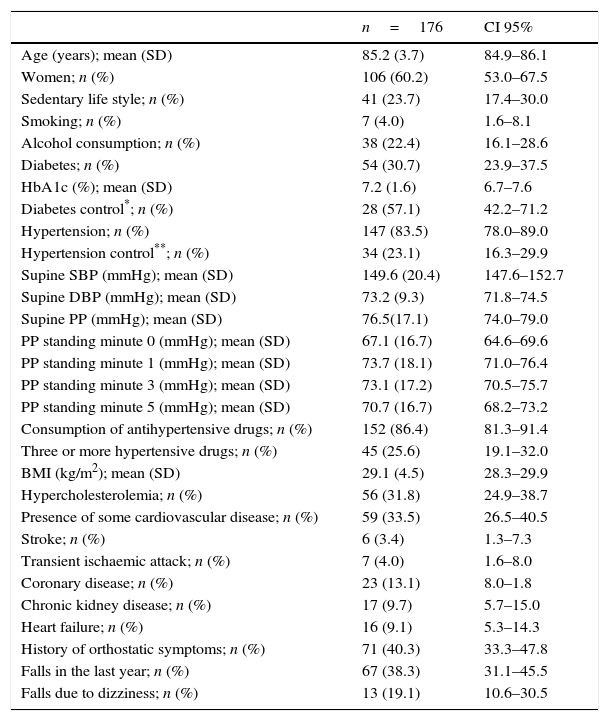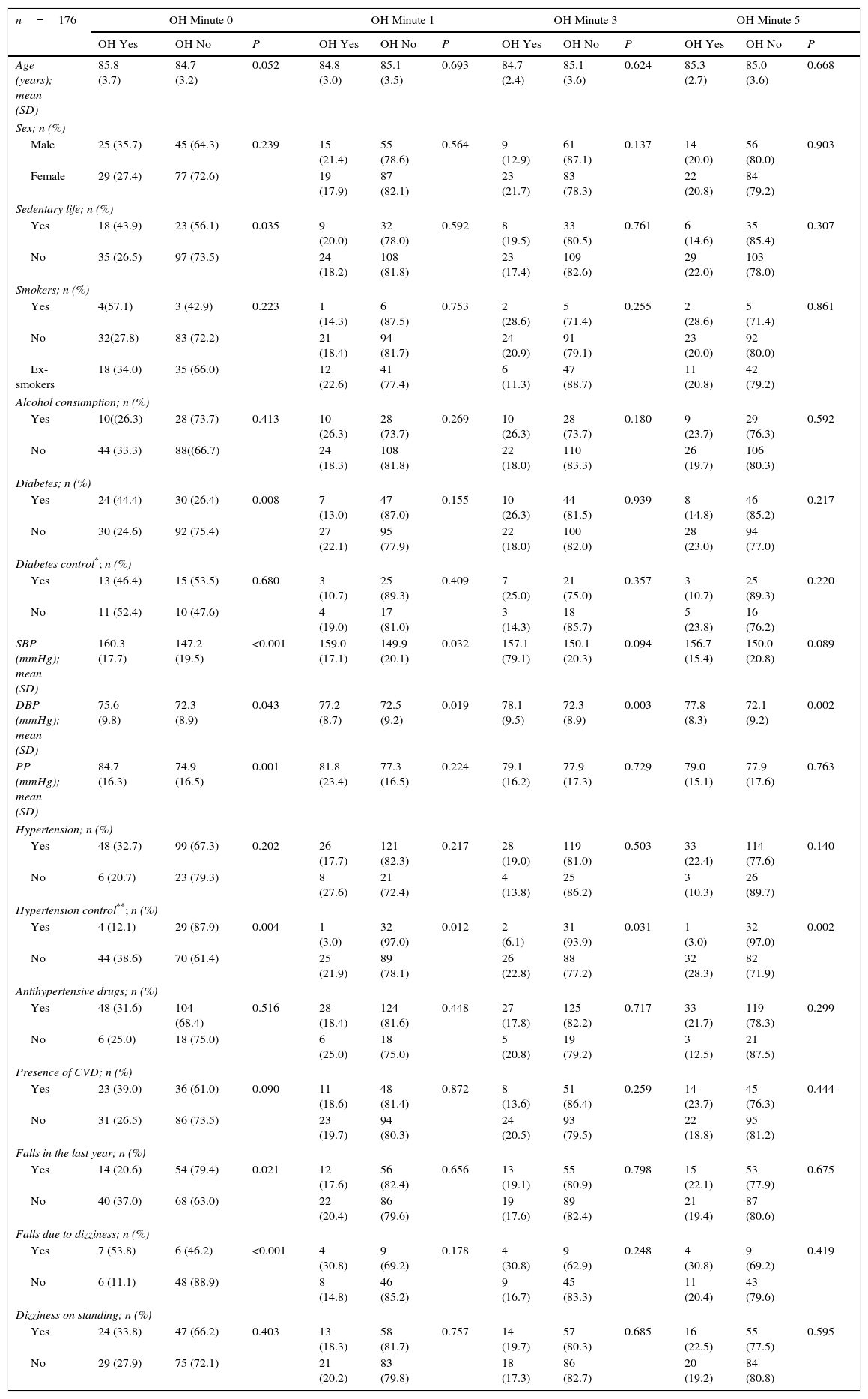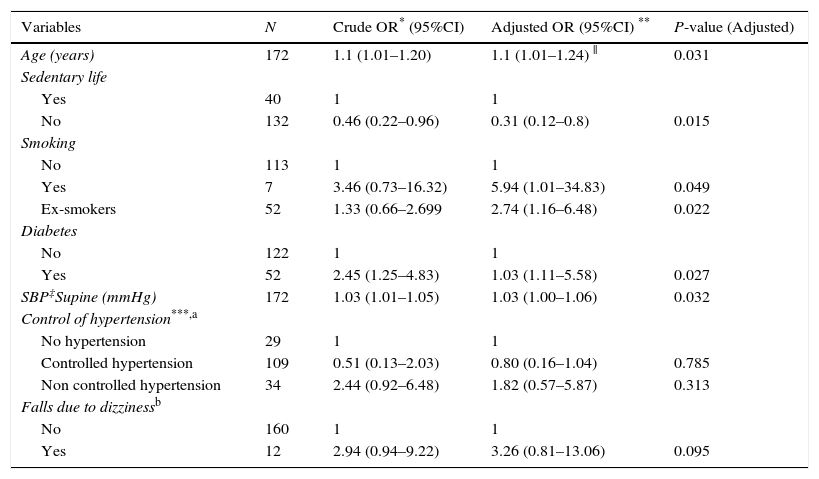Orthostatic hypotension (OH) is a common disorder, and possibly underdiagnosed. In the elderly, OH has been considered a common cause of falls, fractures, and fear of falling. Its prevalence increases with age, probably related to the number of drug treatments, decreased fluid intake, and the progressive dysfunction of the autonomic nervous system.
ObjectivesTo evaluate the prevalence of OH in a non-institutionalised population ≥80 years, according to different criteria based on sequential measurements taken at minute 0, 1, 3 and 5 of standing.
Methods designA diagnostic accuracy study using an oscillometric device.
Setting and participantsConvenience sampling of 176 people ≥80 years attended in an urban Primary Health Care Centre.
MeasurementsSupine and standing blood pressure (BP) measurements, at minutes 0, 1, 3 and 5 using the OMRON 705-CP blood pressure device. OH definition: decrease ≥20mmHg in systolic BP (SBP) and/or ≥10mmHg in diastolic BP (DBP).
ResultsMean age (Standard Deviation) was 85.2 (3.7) years, and 60.2% were women. Prevalence of OH: 30.7% at minute 0; 19.3% at minute 1; 18.2% at minute 3; and 20.5% at minute 5. Age, sedentary life, smoking, diabetes and SBP values were significantly associated with a greater BP decrease at minute 0.
ConclusionA third of the sample had OH, with a maximum prevalence at minute 0. From a clinical point of view, it is suggested that the definition of OH is prioritized according to the BP at minute 0.
La hipotensión ortostática (HO) es un fenómeno muy común posiblemente infradiagnosticado. En ancianos, la HO puede causar caídas, fracturas y miedo a caerse. Su prevalencia aumenta con la edad, seguramente en relación con el número fármacos prescritos, la disminución de ingesta de líquidos y la disfunción progresiva de su sistema nervioso autónomo.
ObjetivosEvaluar la prevalencia de OH en ancianos mayores de 80años no institucionalizados según el criterio diagnóstico de HO en medidas secuenciales tomadas en los minutos 0, 1, 3 y 5 de bipedestación.
Sujetos y métodosDiseño: estudio de diagnóstico mediante aparato de presión oscilométrico.
Muestramuestreo a conveniencia de 176 pacientes ≥80 años atendidos en un centro de atención primaria urbano.
MedidasPresión Arterial (PA) en supinación y a los minutos 0, 1, 3 y 5 mediante un tensiómetro OMRON 705-CP. Definición de HO: descenso ≥20mmHg en la PA sistólica (PAS) y/o ≥10mmHg en la PA diastólica.
ResultadosLa media de edad (desviación estándar) fue de 85,2 (3,7) años, y el 60,2% fueron mujeres. Prevalencia de HO: 30,7% al minuto 0; 19,3% al minuto 1; 18,2% al minuto 3; 20,5% al minuto 5. Edad, sedentarismo, tabaquismo, diabetes y valores de PAS mostraron una asociación significativa con un mayor descenso de la PA en el minuto 0.
ConclusiónUn tercio de la muestra presenta HO, con un máximo de prevalencia en el minuto 0. Desde el punto de vista clínico parece recomendable priorizar la definición de la HO según la PA en el minuto 0.











